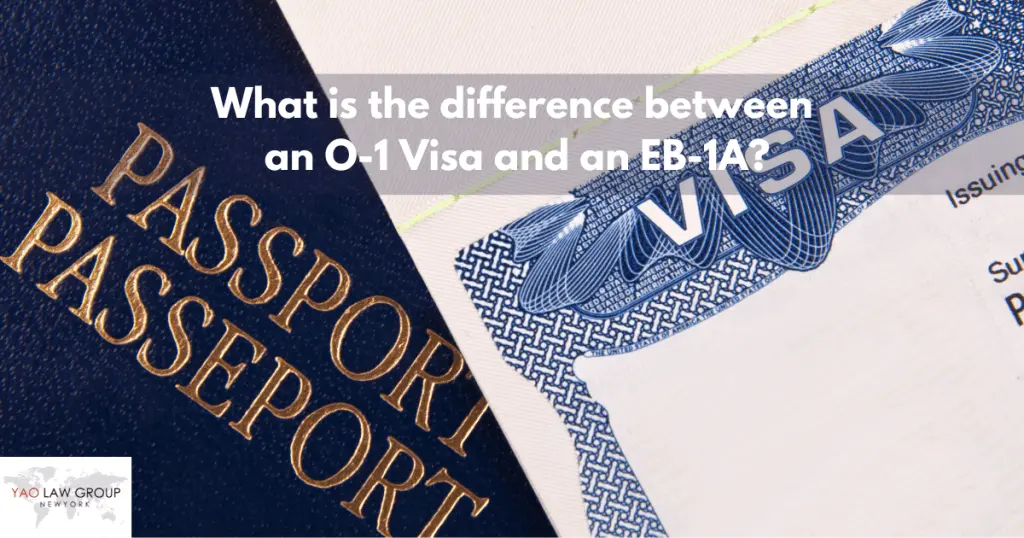You already heard about the O-1 visa.
If you are at the top of your field, you have been featured in publications and national or international newspapers or a member of one of the most prestigious professional organizations…
If you possess these characteristics, you are exceptional in your field.
With your credentials, what is the best visa to travel to the United States?
O-1 Visa VS. EB-1A Visa
These two visas will allow you to live and work in the United States, both visas will need you to demonstrate that you are extraordinary and widely recognized in your industry. However, the length of time an immigrant is permitted to remain in the United States is the primary distinction between the two visas.
This only allows temporary stay, whereas the EB-1A visa grants permanent residency. EB-1A is a self-petition visa, which indicates that you do not require a job offer as evidence of future employment. Nevertheless, this does not prevent an employer from petitioning on your behalf.
While the O-1 Visa is a work visa, you must demonstrate future employment in the United States. Moreover, the standards for an EB-1A visa are significantly more stringent than those for an O-1 visa;
…consequently, O-1 visa holders will not be automatically approved for an EB-1A, as the two visas have distinct acceptance criteria.
Transition From O-1 Visa to EB-1A
Transferring from an O-1 visa to an EB-1A visa is highly desirable since it is one of the most suitable visa transitions. Both visas are designed for individuals with extraordinary abilities and industry recognition. Please note that there is no separate application form for the transfer from O-1 to EB-1A.
However, you may use all the work and projects you completed while on an O-1 visa in the United States as evidence. This evidence will demonstrate to USCIS officials that you have contributed to highly influential projects in your profession, which is of great value.
Filing Process
- Review the instructions for Form I-140, Petition for a Nonimmigrant Worker;
- Complete and sign Form I-140;
- Pay the filing fee, if applicable; and
- Provide all required evidence and supporting documentation.
You may file Form I-140 for yourself if you apply for an EB-1 visa based on extraordinary ability. You may be eligible to file Form I-485, Application to Register Permanent Residence or Adjust Status.
Processing Time
It is recommended that you submit your EB-1A application prior to the expiration of your O-1 visa.
The procedure can take up to one year, depending on the applicant’s capacity to correctly submit documents, the USCIS adjudication time, and whether the applicant uses premium processing. Typically, the processing period ranges from six to eight months.


